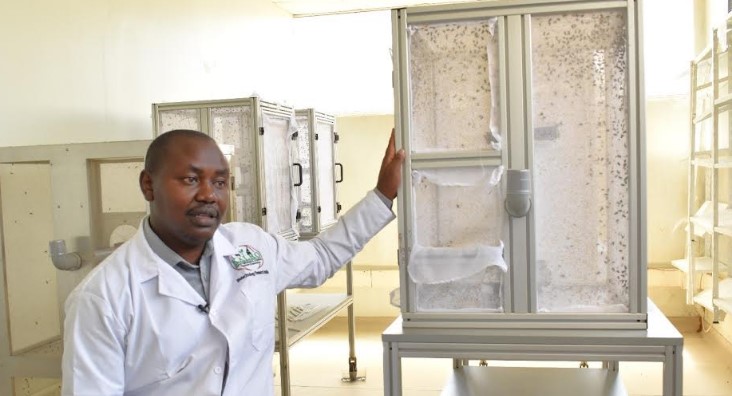The Kenya Agriculture and Livestock Research Organization (KALRO) has introduced the production of maggots for clinical therapy in the treatment of chronic non-healing or infected wounds.
The therapy, also known as Maggot Debridement Therapy (MDT) or Larval therapy, involves using sterile fly larvae (maggots) that feed on dead tissue and bacteria film (biofilm) in a wound, effectively cleaning it up to enhance healing.
A wound is normally defined as chronic or non-healing if it takes basically more than three weeks to heal. Chronic wounds normally present a huge burden to patients and caretakers, straining them physically, socially, emotionally and economically.
Paul Ngari, from the Biotechnology Research Institute at KALRO Muguga at the department of Pharmacology and Microbiology research, says the team was working on the game-changing maggot therapy, which has since posted positive results.
“We use the green beetle larvae to manage chronic wounds. The larvae normally eat the dead necrotic tissue from the wounds and also feed on harmful bacteria. Larvae produce the excretions and secretion, which has proteolytic enzymes that destroy these harmful bacteria and provide a protective layer on the surface of the wound,” he explained.
Ngari noted that maggot therapy is not a very new technology in Kenya, as it was introduced back in 2013 through the aid of the Slovak Government, where a good groundwork was laid through collaborative research between KALRO, the University of Nairobi, and Kenyatta National Hospital.
Maggot therapy was also a common form of treatment in early civilization, but with bacteria developing resistance to the antibiotics, healthcare practitioners are now reverting to maggot therapy as an alternative to treat wounds, especially chronic ones.
Ngari explained that sometimes a patient might have another underlying condition resulting in him or her being immunocompromised and thus resistant to the bacteria some flesh-eating taking advantage.
Biotherapy, uses substances derived from living organisms to treat diseases and is thus important in the management of such wounds.
Besides health, he noted that the advantage of maggots is that if applied in forensic research, they can be applied to the conversion of waste to useful protein by allowing them to grow to the third instar larvae, which is normally 10 to 20 millimeters and used as animal feeds once dried.
“Maggots are very rich in protein, which is about 60 per cent protein, making it about twice the composition of protein in soya and can be mixed in animal feeds in the right proportions for feed formulation,” Ngari said.
On 26 October 2012, Kenyatta National Hospital, University of Nairobi (UoN) Ethics and Research Committee (KNH-UoN ERC) approved a pilot study entitled “Maggot Debridement Therapy: The Biotherapeutic Method of Healing Chronic Wounds in Kenya.”
The pilot study was conducted between August and December 2013 at KNH. Twenty-four patients were treated with a total of 30 maggot applications.
Globally, about 500 million smallholder farmers normally till about 83 per cent of the available land, which contributes about a third of the food we get and in the recent future, due to climate change, food security is becoming a big issue and therefore various technologies, such as the maggot one, can be able to bridge this gap in production as a cheap alternative source of protein
The Kenya Agricultural and Livestock Research Organization is running an open week across all their sectors in the country where farmers and the general public can engage scientists on various technologies in both crop and livestock farming.
By Wangari Ndirangu



